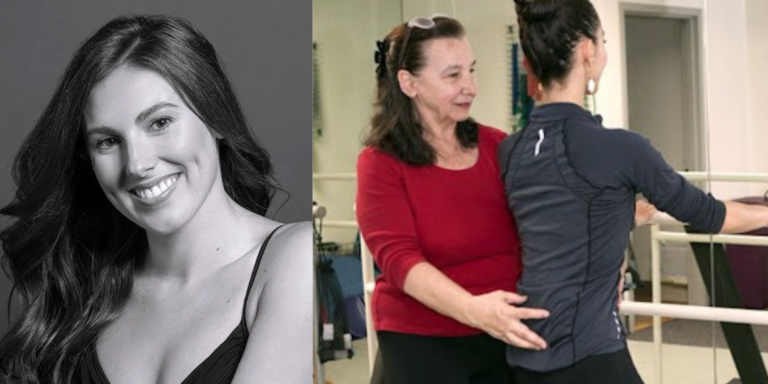
Last September, dance students at Ethical Culture Fieldston School in the Bronx started a 12-week series of rehearsals to learn an excerpt from New Second Line by Camille A. Brown. Director of dance Rob O’Neill spoke with DT about this repertory project, led by Matia Johnson of Camille A. Brown & Dancers.
DT: How did you decide on the work of Camille A. Brown?
RO: Each year I look at the makeup of the dance company. It’s a two-year commitment. They audition at the end of their sophomore year, and they commit to this dance major and study six hours a week during school. They get to do two rep projects. Last year was Doug Varone —I wanted for them to start to experience authentic partnering. This year I wanted to challenge them to have to move fast—to move as an ensemble and to really communicate with each other.
DT: How does New Second Line do that?
RO: It’s a celebration of the culture of New Orleans that Camille created in response to Hurricane Katrina in 2005. It serves a couple of purposes for the company. One is to see how a choreographer takes something in the world and shapes it into a piece. It was wonderful how she did this quite complex movement—especially for high school. Everyone dances, but they don’t have to dance exactly alike, so it has personal interpretation. You must put yourself into this dance.
DT: Did they have any trouble with it?
RO: For some, the challenge is moving that fast and that intricately—weight shifts like you wouldn’t believe. And direction changes and dynamic grounded dance that really expressed the guts and souls of these people. It’s not something you just pretend you’re doing. What it’s done for them is both to challenge them to do some really complex dance and also to look out and dance with somebody.
DT: After the rehearsals end and they perform the piece, what’s next? How do you follow this kind of experience?
RO: They are preparing to do their own choreography and to take complete charge of their own work for the spring dance concert. The rep project gives them a chance to really absorb themselves in someone else’s process and see some of the spatial choices and the vocabulary and some of the ways choreography uses space and time. So they get a taste of that.
DT: Do your students want to pursue dance as a career?
RO: All these kids go to college, and they often choose where they go according to “do they have dance.” But dance is not usually primary. They’re really smart kids at Fieldston. They go on in a thousand directions. My thing is I want my politicians and my business leaders to have that experience of creativity and respect for the body. I want them to go out in the world and know what it is to tell their truth. Because as we know, if you put it in your body and have the guts to express that, nobody can take it away. You can’t take it back. It’s present in the world once you express it physically




